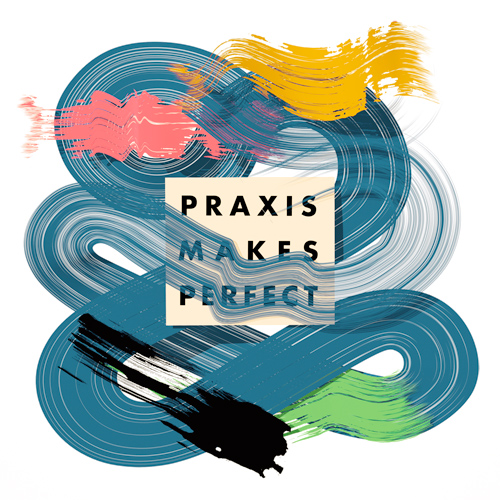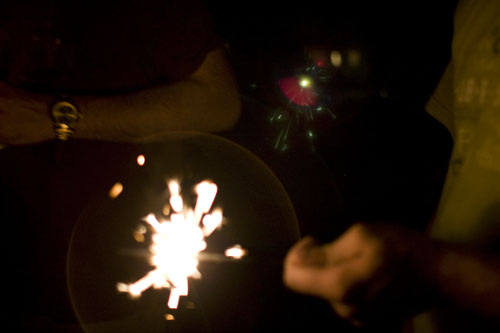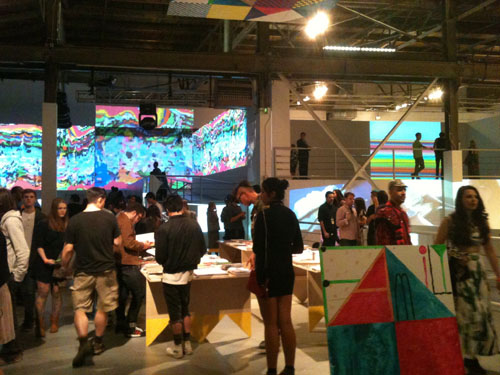Lighting a fire is only half the battle. It is the building of a fire that proves the ultimate test of how long the flames will last and the amount of heat it will radiate.
After graduating from Cranbrook with my MFA in Photography last spring, I stayed in Michigan for a few months to work with a summer art program for high school students, also taking advantage of an opportunity to collaborate on a public art installation in downtown Detroit. It was, in many ways, an idyllic summer filled with barbeques and chasing fireflies, marked by a steady flow of conversation about who had left, where they’d gone, and what was coming next.
Come September, I took my leave of Michigan as I listened to an NPR report about President Obama’s recent visit to Detroit. Speaking at a Labor Day picnic with workers from the GM plant, he spoke of the important role labor unions play in maintaining the security of America’s middle class. Looking out for one another. Giving everybody a shot, everybody a chance to share in the prosperity. Considering GM’s impressive turnaround after a controversial bailout from the Obama Administration, his words inspired pangs of nostalgia and love for this place. Despite its struggles, the city held promise and raw artistic energy, and some of my friends were dedicated to staying on after graduation to become more involved.
I’d decided to return to the west coast, with my sights set on an eventual move to Los Angeles. After our previous year’s departmental trip to California, I felt a strong pull towards the city and the momentum of its art scene. But first, I would head back to the Pacific Northwest for a residency in Washington and then south to Portland to consider a job offer from a friend in the medical field. Swayed by the idea of saving up some money and working part-time while reestablishing my studio practice, I took the job. I got a break on rent for a little house in NE Portland with a furnace on the fritz and a wood burning fireplace. It would prove to be a long winter.
Get an ignition source. Gather tinder, which catches the initial spark and flares up to transfer it to the kindling. If the kindling is damp or wet, the tinder must burn long enough to dry it out. Pieces of bark and dry sticks can be turned into powdery tinder with a knife. You can also use dead plants and grasses, wax, lint, birch bark, moss, wood shavings, paper, pine pitch, and dry needles.
I began to build fires on a regular basis, which required more finesse and patience than I’d anticipated. A large part of my “tinder” was provided by newspapers originally printed in a large run as part of my Thesis Exhibition at Cranbrook. I didn’t know whether to interpret this as tragic or encouraging; I was burning my work, but it was also providing fuel for the new fire. On evenings where the flames were slow in coming, I took it as a personal affront.
Talking to friends from graduate school now scattered across the country proved helpful in keeping the situation in perspective. The pains of transition were a part of the process, frustrating and lonely though they could be when experienced from our respective corners. Whether teaching in a new place, assisting a demanding artist, returning to a familiar home, or taking on an odd job or three to cover the rent, it seemed everyone was learning to navigate the obstacles while continuing to find what they needed to make it work. In Portland, that meant early morning bike rides and early evening artwalks to keep me sane, fires and hot soaks (ok, and some whiskey) to keep me warm, and writing more until I could get back into the studio again.
Gather kindling. Kindling needs a large surface-to-volume ratio and more bulk than tinder so it can ignite easily, producing sustained heat and flame to light the main fuel. To split the wood, hold a stick upright by sticking it into the ground or holding it with your feet. Take a rock and smack the end of the stick until it cracks. Peel back with your fingers and split the wood into smaller pieces.
By February, I had wrapped up my work in Portland and made the move to Los Angeles. The long drive culminated in a bizarre finale, as I found myself trapped behind a large taco truck radiating sparks and then giving birth to a muffler right on the highway. My heart sank as I ran right over the thing. Miraculously, my van kept right on rolling. Continuing with the metaphor of building fire, perhaps the sparks were an aptly timed event. Welcome to the City of Angels. Now keep pushing.
I’ve thought about Ed Ruscha’s work often since arriving in LA. It’s not a hard thing to do, as his presence is very strong here after decades of a well-established career closely tied to themes of the city and its environs. I think of the work especially in the context of long drives I’ve undertaken in the past year – traveling thousands of miles westward and then continuing southward in pursuit of this very place.
“The horizon paintings partially come out of long drives across the desert. Those are the kinds of drives I really get into. The vastness just asks to be filled with something, and those paintings are a lot about putting a voice into that vastness. When you are driving, you just start thinking about getting to the other side of the horizon— what city do I want to get to; where am I going?” –Ed Ruscha
I am now on the other side of the horizon, so to speak. This, I believe, is where the real work begins. Though a world away from the quiet expanses of the desert, Los Angeles has its own sense of vastness. The reality of its seemingly endless sprawl can easily overwhelm. This increases the importance of action, of putting a voice into that vastness, responding to the city’s pockets and layers and contributing to the diverse community of artists within it. This pursuit provides the vital balance to the rougher side of the transition: looking for work, applying, searching, driving, looking, applying, searching, driving. You get the idea.
Gather logs or other bulky fuel. Fuel burns slowly and steadily for an extended period of time. Softwoods have leaves in the shape of needles. They burn quickly and very hot, also containing flammable resins that help with starting a fire. The resin crackles and pops when being burned. Hardwoods have broad flat leaves and don’t catch fire as easily. Once they do, however, they burn for a longer period of time and give off more heat. A good rule of thumb is once you think you have enough wood, get at least five times as much. You can never have enough wood.
A couple of months ago, I took a position working at MOCA in conjunction with the Transmission LA Festival. The festival, curated by Mike D of the Beastie Boys, hosted by Mercedes-Benz and housed at the MOCA Geffen, facilitated an interesting mash-up of art, music, celebrity and spectacle (one memorable moment was watching Mike D introduce his mom to Jeffrey Deitch). During our shifts, I shared conversations with other staff about our common pursuits. Many are also in the MFA pipeline, as they anticipate, complete, or transition out of their respective graduate programs. I considered whether to interpret this as disheartening or encouraging. As Master of Fine Arts programs have become increasingly popular, it makes sense to conclude that many of their graduates will gravitate towards urban art centers and create a more competitive job market. I can attest to the truth of this based upon the number of interviews and subsequent rejections I’ve received here.
Yet, it is all worth it. I feel privileged to be here, sharing conversations and ideas with others who are passionate and dedicated to a wide spectrum of creative pursuits, doing what it takes to make their practice and lifestyle sustainable. I recently moved into my own work studio, and am slowly unwrapping images and ideas that I’ve stored away for months. As I continue to work for the museum, start training for another part-time position at a photography gallery, and await info on a possible dog sitting gig, I begin to understand the realities of keeping an open mind and piecing it together.
Place the tinder in a pile of kindling that’s spaced loosely enough to let air circulate, but close enough so a flame can spread through. Light the tinder and add kindling. Slowly blow on the igniting fire to build heat and intensity. As the fire grows, add firewood from smallest to biggest. The arrangement you choose will determine whether it stays burning, how fast it burns, and conversely how long your wood lasts.
In writing this column for Praxis Makes Perfect, I am pursuing an honest and ongoing investigation of what life looks like post-MFA. As I live out the process and work towards the answer of this question, I will also be following other emerging artists who are building their own careers. Jacquelyn Gleisner and Jeffrey Augustine Songco have done an amazing job establishing this column; I have found their posts to be a source of comfort, inspiration and such much-appreciated humor in the midst of a challenging transition. I hope to provide other readers with the same. Slowly but surely, we build.







